MB&F Legacy Machine No. 1
Maximilian Büsser’s advanced-tech wristwatch inspired by the intricate craftsmanship of early-19th-century pocket watches
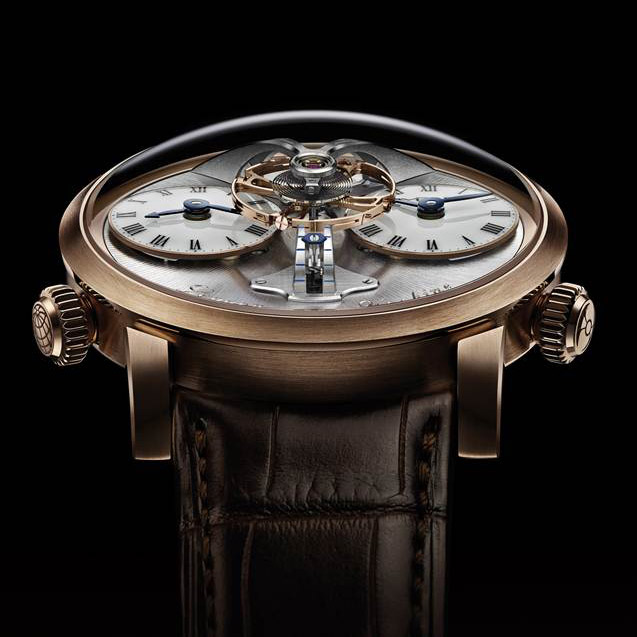
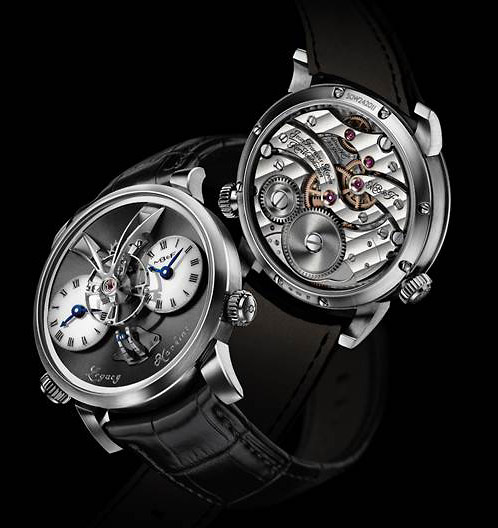
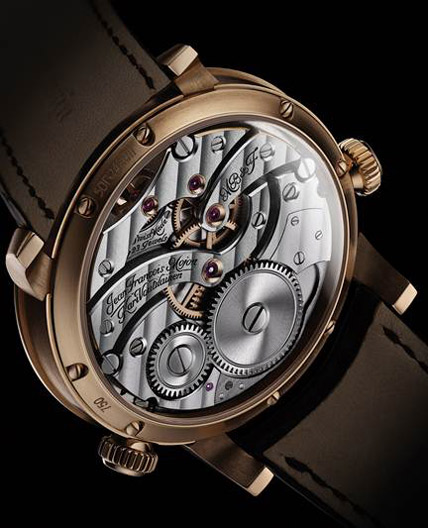
Maximilian Büsser always keeps the watch world and his fans guessing about his next creation and its inspiration. (Previous models took whimsical cues from his childhood robot toys, jet fighters and Star Wars.) Speculation on his next numbered creation, assumed to be the fifth in his series of Horological Machines, reached iPhone levels in the watch world. But what was actually going on in Büsser’s mind was much more of a throwback than his usual radical watch reinventions.
An appreciation for the craftsmanship of 19th-century “statement” pocket watches led him to wonder what he would have created were he born 100 years ago, near the peak of watchmaking’s era of technical innovation. This question was the root of his desire to add a second product line, and yesterday he announced the first in that line, the Legacy Machine No. 1.
Büsser acts as visionary and creative director, enlisting the help of some of horology’s most innovative and respected craftspeople. It’s the head-scratching kind of scene you’d love to watch taking place as Büsser describes his vision and the need for as-yet unimagined movements and mechanics. His all-star crew for the Legacy Machine No. 1 includes Jean-François Mojon and his team at Chronode, who designed the movement from scratch. Kari Voutilainen, a highly regarded watchmaker and artisan, created the watch’s aesthetics and the many handcrafted finishes. The movement of the Legacy Machine No. 1 includes both of their names—a rare occurrence.
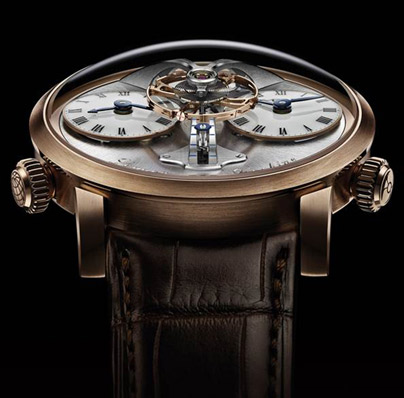
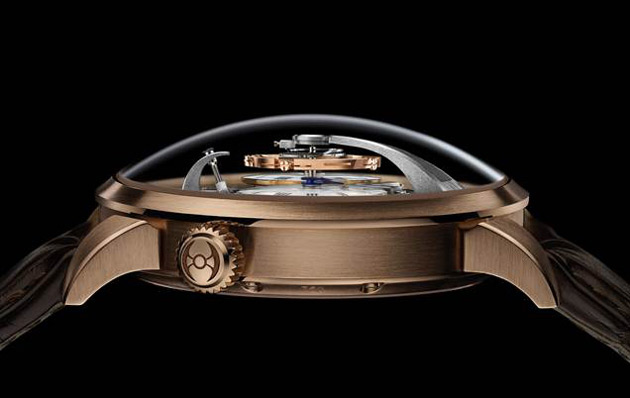
Most probably aren’t aware that nearly all of the complications that exist, and their engineering, were designed a long time ago. (A complication is anything other than the time—the date, chronograph, time zones, alarms, moon phases, etc.) Unique to the Legacy Machine No. 1 are a few twists. The most obvious is the three-dimensional movement, which brings the balance wheel, often hidden in the middle of the movement, to the top, literally; it hangs suspended from a bridge over the dials themselves. It’s like putting a car’s engine in the driver’s seat.
Like its source of inspiration, the 14-millimeter balance wheel resembles those of larger pocket watches—which have a larger wheel that runs more slowly than those in wristwatches. Another first are the two totally independent time zones. Other time zone complications allow you to change only the hour (and a few the half hour), but no others allow you to have two completely different times set and controlled by a single regulator. While this may be more of a technical than practical feat, it’s noteworthy nonetheless. Lastly, the power reserve complication is vertical—a world first and something that normally is represented by a hand or a wheel instead looks like a ski jump.
The LM1’s advanced technology, unconventional aesthetic and masterful engineering make this a must-have for serious collectors, and a wish list item for those of us without the $92,000 to acquire one. Visit MB&F for purchasing information and details.
Also on CH: The MB&F Horological Machine No. 2 and the MB&F Horological Machine No. 3












